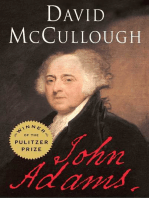Control Etc Motorizado
Control Etc Motorizado
Uploaded by
freddys merchanCopyright:
Available Formats
Control Etc Motorizado
Control Etc Motorizado
Uploaded by
freddys merchanOriginal Description:
Original Title
Copyright
Available Formats
Share this document
Did you find this document useful?
Is this content inappropriate?
Copyright:
Available Formats
Control Etc Motorizado
Control Etc Motorizado
Uploaded by
freddys merchanCopyright:
Available Formats
System Engineering Automotive
Application Note
Throttle Control with Smart Power Bridges and
Microcontrollers of the C500 and the C16x-families.
This application note shows different solutions for electronic throttle control with
components of Infineon Technologies.
Authors: Andreas Pechlaner, Hermann Kern, AE SE
Co-Author: Frank Auer, PS PM2
File: SE_0899_electronic throttle control.pdf
System Engineering Automotive 08.99, Rel 01
Electronic Throttle Control
Contents
CONTENTS ................................................................................................................ 2
APP-Note – Revision History............................................................................................................................. 2
1. INTRODUCTION ................................................................................................. 3
2. TYPICAL SYSTEM CONFIGURATION............................................................... 3
2.1. Driving DC-throttle-motors with additional air-bypass valve ............................................................ 3
2.2. Driving DC-Throttles without additional air-bypass valve................................................................. 7
2.2.1. Control of the idle speed only ......................................................................................................... 7
2.2.2. Driving the full range of a throttle with standard H-bridges ........................................................... 9
2.2.3. Driving with dedicated bridges for throttle control ....................................................................... 12
2.3. Microcontroller for ETC Systems ....................................................................................................... 16
2.3.1. Basic Requirements on Microcontrollers ...................................................................................... 16
2.3.2. Overview on Infineon Technologies Microcontrollers.................................................................. 17
2.3.3. Controlling different types of power devices ................................................................................ 18
2.3.3.1. Controlling single switches and half-bridges............................................................................ 18
2.3.3.2. Controlling Thrilitic power-bridges.......................................................................................... 19
2.3.3.3. Controlling specialized bridges ................................................................................................ 19
2.3.3.4. Controlling bridges with SPI .................................................................................................... 19
3. CONCLUSION................................................................................................... 19
APP-Note – Revision History
Actual Revision: 07.99 Previous Revision: none (original version)
Page of Page of Subjects (changes since last release)
actual previous
Rev Rel
System Engineering Automotive 2 of 19 08.99*
Electronic Throttle Control
1. Introduction
In modern cars, electronic control units (ECU) become more and more important.
Also classic mechanical systems like throttle valves will in the future be driven by
electronic components. An electric motor on the throttle and an electromechanical
gas pedal will replace the accelerator lever linkage. An ECU, for example the engine
management, controls the new configuration. There are high requirements for the
system, regarding the dynamic behavior of the throttle. The throttle position has to be
controlled very precisely, and the movement of the mechanics must be very fast.
Therefore relatively strong motors and corresponding gearboxes are necessary.
A further feature of such an ETC-system (Electronic-Throttle-Control) is the possibility
of idle speed control with the throttle itself. The intake air bypass valve is no longer
necessary. The construction of some throttle valves supports this operating mode. In
the standard off-position, the throttle is not completely closed. There is a small air
gap, fixed with two springs. Around this position, the throttle can be positioned in
small angles to control the idle speed. In this case the throttle motor has to rotate in
both directions. This operation mode is described in chapter 2.
One main advantage of this step in development is that the throttle is not only
controlled by the driver’s foot, but also by other systems. A traction control or a
vehicle dynamic control, for example, can be realized with only one throttle. In the
past, additional throttles were used in series with the main throttle.
For this kind of application Infineon Technologies has a broad range of products for
DC-motors as well as for stepper motors. But in this Application Note the focus is
directed mainly to the DC-motor drives. Different throttle concepts need different
power devices:
• For a simple idle speed control, Infineon can supply you with a smart power
bridge called TLE5205-2 or a logic variant of it, the TLE5206-2.
• Discrete solutions, e.g. for throttles which are driven only in one direction, can be
realized with several standard power MOSFETs and diodes (see also table in
chapter 2.1.).
• The TRILITHIC-Power Bridges like the BTS780GP, the BTS7710GP or the
monolithic devices like TLE5209 G and the TLE6209 G are excellently suitable for
driving throttle motors with high currents in both directions.
• The microcontrollers of the C500 (8-bit), C16x (16-bit) and TriCore (32-bit)
families provide a powerful set of peripherals to control ETC applications.
2. Typical System Configuration
2.1. Driving DC-throttle-motors with additional air-bypass valve
The main characteristic of a throttle valve, which is used tandem with a bypass valve,
is the neutral position. In the idle mode it is completely closed with a strong spring
and the air-bypass valve controls the idle speed. This means that the motor has only
to drive the throttle in one direction. Therefore the electronic driving unit needs a half-
bridge or a single-switch together with a freewheeling diode. One standard PWM-
System Engineering Automotive 3 of 19 08.99*
Electronic Throttle Control
capable output pin of a microcontroller can be used for this task. Dead time
generation is not required.
The rated position of the throttle is given by an ETC potentiometer. A potentiometer
is coupled with the gas pedal mechanics and gives a linear voltage signal as input to
the ECU.
To generate a feedback signal, which is important for the control circuit, two
potentiometers are connected internally to the throttle valve. They supply the ECU
with two independent analog signals, in order to give information about the actual
position of the throttle. Normally one signal decreases while the other signal
increases. Both signals are proportional to the revolution angle of the system. In
principle only one of these two position signals is necessary for the control circuit. But
to improve the system accuracy, the second signal is used as an additional control
value (e.g. to compensate temperature effects). Block diagram 1 shows the principle
setup of such a valve.
Intake
air
gearbox
put back
with
Power spring
line
Position
feedback throttle
valve
motor
Intake
manifold
Figure 1: Principle construction of an electromechanical throttle
The complete control circuit for an electronic throttle control may look as shown in
Figure 2.1. The throttle motor is supplied by 12V and pulsed with a lowside power
switch. For the freewheeling phase a diode can be used. The lowside switch needs
only one PWM-channel of the microcontroller. If a very low power dissipation is
required, the diode can be replaced by a further power transistor (the same type as
the lowside switch, in a half-bridge configuration). Figure 2.2 shows such a circuit.
The highside switch is active while the motor inductance is in the freewheeling
phase.
System Engineering Automotive 4 of 19 08.99*
Electronic Throttle Control
12V
5V
ECU 5V TLE
4271
C16x
analog C500 A/D
A/D
in A/D analog
PWM in
throttle
DRIVER
acceleration
pedal throttle motor
Figure 2.1.: system configuration with freewheeling diode
12V
5V
ECU 5V TLE
4271
C16x
analog C500 A/D
A/D
in A/D
PWM
throttle
DRIVER
In high
In low
acceleration
pedal throttle motor
Figure 2.2.: system in half-bridge configuration
That way there is only a small voltage drop across the highside FET and the power
dissipation decreases dramatically. In this case some more effort has to be done on
the driving circuit. A special half-bridge driver and two PWM-channels of the
System Engineering Automotive 5 of 19 08.99*
Electronic Throttle Control
microcontroller are necessary. Crossover currents in the half-bridge should not occur.
Therefore a special dead time control of the two PWM signals, generated by the
microcontrollers CCU, must be realized. Figure 3 shows this relationship.
In high
In low
tdelay tdelay
Figure 3: driving of a half-bridge with active freewheeling
To avoid a noisy operation of the throttle, it is recommended to use a driving
frequency between 20kHz and 30kHz. The deflection of the throttle valve is adjusted
by the duty cycle of the signal. To reach high dynamic behavior in combination with
high positioning accuracy the PWM-signal needs the full range of 0-100% duty cycle
and a high resolution of at least 7bits.
The potentiometers of the acceleration pedal and the throttle should be supplied with
the stable 5V of a voltage regulator. That way the input and feedback signals will be
very precise. For the evaluation of the analog signals, the A/D converter should have
a resolution of 10bit at least.
Different throttles work with motor peak currents of 5A to 15A. The needed power
switches and, if used, the freewheeling diode have to be calculated according to the
maximum allowable power dissipation of the packages, the thermal resistance of the
board and the maximum permitted power losses in the ECU.
Infineon Technologies supports you for such a calculation also with Simulation
models for Spice and Saber (download from the Internet page:
http://www.infineon.com/products/36/36.htm ).
Load Current Rthja=30K/W Rthja=10K/W
Throttle motor I=6A BUZ101S(L), SPD21N05L BUZ104S(L), SPD13N05
L=1.3mH I=10A BUZ102S(L), BUZ101S(L), SPD21N05L
f=20kHz, I=12A BUZ111S(L) BUZ103S(L), SPD28N05L
dc=96%,
Tamb=85°C
Bypass valve I=0.5A BSP78, BSP320S, BSP296, BSP295,...
L=40mH
F=100Hz
Dc=50%
Tamb=85°C
Table 2.1.: Standard products for throttle control.
System Engineering Automotive 6 of 19 08.99*
Electronic Throttle Control
Table 2.1. contains some power-product proposals for this kind of throttle control
based on those simulation models. The assumption for these results was a ambient
temperature of 85°C. If higher ambient temperatures occur, the simulation has to be
repeated with these new conditions. The simulation circuit for the throttle motor was
similar to Figure 2.1. The bypass valve has two windings, one for turning clockwise
and one for turning counterclockwise. So two of the recommended switches are
necessary.
2.2. Driving DC-Throttles without additional air-bypass valve
As described in the introduction, the throttle itself can also adjust the idle speed.
Small air masses must be controlled precisely. Therefore it is necessary to drive the
motor very exactly in both directions around the neutral position. This system
requires power-stages in an H-bridge configuration to realize the bi-directional mode
of the DC-motor. The capture compare unit of the microcontroller should support the
functionality of full bridge driving (e.g. CAPCOM6 of C504, C164).
2.2.1. Control of the idle speed only
Some throttles adjust only the idle speed with a motor, but the acceleration and
driving of the engine is still done by a mechanical coupling to the acceleration pedal.
As already mentioned Infineon Technologies has two products in the portfolio which
support full bridge driving combined with some additional functionality. The devices
can be controlled by PWM up to 2kHz.
Type Electrical Functionality Protection features Packages
parameters
TLE5205-2 >Icont=5A >Turn >full short circuit >P-TO218-7-11
>Ipeak=6A clockwise protection >P-DSO-20-10
>Vbbmax=40V >Turn counter >over-temperature >P-TO263-7-1
>RDSon=200mΩ clockwise protection >PTO220-7-12
>fmax=2kHz >Brake with
>diagnosis with
lowside error flag
switches on >under-voltage
> Open load lockout
detection in
>CMOS/TTL input
OFF-state >No crossover
current
TLE5206-2 Same as Same as Same as Same as
TLE5205-2 TLE5205-2, but TLE5205-2 TLE5205-2
brake H H
instead of open
Load detection
Table 2.2.1.: product overview for idle speed control
System Engineering Automotive 7 of 19 08.99*
Electronic Throttle Control
HS1 HS2
LS1 LS2
Figure 4.: Block diagram of TLE5206-2
Turning phase
Braking phase
Turning phase
Braking phase
Turning phase
Braking phase
In1
In2
HS1
HS2
LS1
LS2
Phase 1 Phase 2 Phase 3
Turn clockwise, brake Turn clockwise, brake Turn counter clockwise,
lowside, slow decay reverse, fast decay brake highside, slow decay
Figure 5.: Different solutions for driving the TLE5206-2
The functional modes (turn clockwise, turn counter clockwise and brake) are
determined by the two input pins. Depending on the allowed power dissipation and
the intended decay time the freewheeling can be done by switching over to the
second path of the bridge, with the integrated diodes or with the brake-function,
where both lowside switches are turned on. The TLE5206 additionally has the
System Engineering Automotive 8 of 19 08.99*
Electronic Throttle Control
possibility to alternatively switch on the two highside switches in the brake phase. An
error flag monitors the state of the system. Any faults like short circuit to ground or
Vbb, or open load can be detected. That way a safe operation is always guaranteed.
Table 2.2.1 gives a short overview. Only two output pins (e.g. from a PWM-unit or
software controlled) of the microcontroller allow very complex driving modes. A block
diagram of the driver, shown in Figure 4, explains the effects of different possible
input signals on the outputs.
In Figure 5 is an example of different input timings for a bi-directional driving of the
throttle. In phase 1, the motor opens the throttle slowly, because the current is
reduced with the duty cycle of the PWM on IN1. While IN1 is low, the two lowside
switches are in on state and brake the motor. The freewheeling energy of the motor-
inductance decays to ground and doesn’t disturb the supply-circuit. The second
possibility to realize the freewheeling is shown in phase 2. The bridge is switched on
for a short time in the opposite direction. That way the decay is very fast and the
braking of the throttle is very strong. This action allows a precise positioning of the
valve and decreases the power dissipation; but it causes negative peaks on the
supply current. Phase 3 is the counter clockwise movement of the system.
Exemplary, it shows a solution for a slow decay in the highside switches, which is
possible only with the TLE5206-2.
2.2.2. Driving the full range of a throttle with standard H-bridges
If the complete deflection of the throttle is done with the motor, like in chapter 1
described, standard H-bridges like the BTS780GP or the BTS7710GP can be used.
They are suitable for big throttles with high currents. These bridges consist of a two-
channel smart power highside switch and two standard power-MOSFETs, which are
protected by the highside switches against short of load and short circuit to ground.
Figure 6 shows this construction. The power-MOSFETs can be pulsed with very high
frequencies, up to 100kHz. But the highside switches can not be switched faster than
1kHz. Therefore they are not suitable to be switched on in the freewheeling phase of
the motor (active freewheeling) at high frequencies. However, it is no problem to use
the reverse diode of the highside switch as freewheeling diode. The special power
package allows the bigger power losses caused by this kind of driving. An example
for a driving circuit of a Trilithic-bridge is given in Figure 7. The highside switches can
be controlled directly by the microcontroller pin. This is not true for the lowside
switches. They have a gate capacity that has to be charged. In particular if they
should be switched very fast, the required currents will be in the range of 200mA. A
microcontroller output pin can’t supply such high currents by itself. Therefore a driver
stage is necessary. This can be realized with discrete small signal transistors, or with
special buffer ICs. Depending on the frequency you will need driving currents up to
500mA. The highside switches have an open-drain output for diagnosis feedback.
With external pull up resistors, this signal is evaluated by the microcontroller. The
resistor in the logic-GND path protects the device against over voltage peaks and
reverse polarity. (A special Application-Note for reverse polarity of Smart-Power-
Switches is available on the Internet: http://www.infineon.com/products/36/36.htm ).
System Engineering Automotive 9 of 19 08.99*
Electronic Throttle Control
Figure 6.: Construction of a Trilithic bridge
Table 2.2.2 gives an overview of the TRILITH-bridges, which are recommended for
throttle control systems with high currents.
If only low currents are required for a throttle control system, there are some more
products available. The BTS7700 or the BTS7760, for instance, have the same
functionality as the above-described devices, but with a P-DSO28 package.
Therefore the occurring powerdissipation may not be too high. You can find more
detailed information about these products in the datasheets.
System Engineering Automotive 10 of 19 08.99*
Electronic Throttle Control
Figure 7.: Driving circuit of a BTS7xx for throttle control
Type Electrical Functionality Protection Packages
parameters features
BTS780GP >Icont=15A >free >short circuit >P-TO263-15-1
>Ipeak=30A configurable as protection to
>Vbbmax=40V H-bridge or 2 ground
>RDSon=50mΩ independent half >short of load
>fmax=1kHz (HS) bridges protection
>fast PWM (up to >over-
100kHz) with low- temperature
side switches protection
>active >diagnosis
freewheeling at with 2-bit error
frequencies flag
<1kHz >over and
>advanced under-voltage
package for high lockout
power dissipation >CMOS/TTL
>very high peak input
current capability >open load
detection
System Engineering Automotive 11 of 19 08.99*
Electronic Throttle Control
BTS7710GP >Icont=6A >free >short circuit >P-TO263-15-1
>Ipeak=12A configurable as protection to
>Vbbmax=40V H-bridge or 2 ground
>RDSon=120mΩ independent half >short of load
>fmax=1kHz (HS) bridges protection
>fast PWM (up to >over-
100kHz) with low- temperature
side switches protection
>active >diagnosis
freewheeling at with 2-bit error
frequencies flag
<1kHz >over and
>advanced under-voltage
package for high lockout
power dissipation >CMOS/TTL
>very high peak input
current capability >open load
detection
Table 2.2.2.: Product overview
2.2.3. Driving with dedicated bridges for throttle control
Last but not least, Infineon Technologies has two new power-products on the
roadmap, which are specially designed for ETC-Systems (TLE5209 and TLE6209).
Similar to the TLE5205-2 family these devices consist of an H-bridge and are
controlled by two input pins. However the new devices have a different input logic.
One of the two pins is a direction control, and the other is an PWM-input. The first
one, the direction pin, adjusts the different modes “forward” and “reverse”. The
moving speed of the throttle control system is given by the duty-cycle of the PWM
signal on the second input pin. That way only one fast PWM-channel of the
microcontroller is required.
The TLE5209 is a low cost solution. It is designed for continuous currents up to 5A
and peak currents of 7,5A at maximum which makes it suitable for small throttles or
for throttle idle speed control. The maximum PWM-frequency is 1kHz. Internal
monitoring functions protect the device against all possible faults. Two status pins
allow an error diagnosis of the full-bridge. Figure 8 shows a block diagram of this
device.
An example of how to drive the TLE5209 in different modes is given in Figure 9. If the
direction pin is switched as in phase 2, even a fast decay is possible. If both inputs
are on a high level, the bridge turns the current flow in the reverse direction. During
this phase the motor is braked very strong. As a result, the decay time decreases
compared to the normal braking phase, where only both highside switches are turned
on.
In contrast to the TLE5209, the TLE6209 is a high-end product. More current, higher
frequency, programmable operating modes and a serial interface are the main
System Engineering Automotive 12 of 19 08.99*
Electronic Throttle Control
characteristics of this Smart Power Bridge. Table 2.2.3. gives an overview of these
two motor-bridges.
Figure 8.: Block diagram of TLE5209
Turning phase
Braking phase
reverse phase
Turning phase
Braking phase
Turning phase
PWM
DIR
HS1
HS2
LS1
LS2
Phase 1 Phase 2 Phase 3
Turn clockwise, brake Turn clockwise, brake Turn counter clockwise,
highside, slow decay reverse, fast decay brake highside, slow decay
Figure 9.: Different input combinations for TLE5209
System Engineering Automotive 13 of 19 08.99*
Electronic Throttle Control
Type Electrical Functionality Protection features Packages
parameters
TLE5209 >Icont=5A >Turn >full short circuit >P-DSO-20-10
>Ipeak=7.5A clockwise protection
>Vbbmax=40V >Turn counter >over-temperature
>RDSon=280mΩ clockwise protection
>fmax=1kHz >Brake with >diagnosis with 2
highside error flags
switches on >under-voltage
>Brake with lockout
reverse >CMOS/TTL input
operation >No crossover
(active current
freewheeling by
input signal)
TLE6209 R >Icont=6A >Turn >full short circuit >P-DSO-20-10
>Ipeak=7A clockwise protection
>Vbbmax=40V >Turn counter >over-temperature
>RDSon=150mΩ clockwise protection
>fmax=25kHz >Brake with >over-voltage
>adjustable highside protection
current switches on >SPI interface for
regulation >Brake with diagnosis- and
>very low reverse control-functions
standby current operation >over and under-
(20µA) >active free- voltage lockout
wheeling >CMOS/TTL input
programmable >No crossover
>adjustable current
current >over-temperature
limitation pre-warning and
warning
Table 2.2.3.: Product overview
As mentioned in the table, the TLE6209 is suitable for PWM applications up to
25kHz. This is requested more and more by many car manufacturers. Therefore this
product is also optimized regarding EMI-behavior. A voltage slope regulation
minimizes the electro-magnetic-imission. How the TLE6209 can be used in an
application is shown afterwards in the block diagram.
A full duplex 8 bit SPI-Interface is used to control the power device. Different
operating modes are set by sending a command on the SPI. The current limitation
can be adjusted with the bits 0 and 1. The current range is in 1A steps between 4A
and 7A. Bit 2 defines the operation modes “fast decay” or “slow decay”. The current
in the current limitation mode is internally controlled by PWM. The off time of the
PWM signal, which is responsible for the flyback pulses on the output, can be chosen
between 20µs and 80µs by the bits 3 and 4. Bit 5 is not used, bit 6 activates or
deactivates the over-voltage-lock-out, and bit 7 resets the status register.
System Engineering Automotive 14 of 19 08.99*
Electronic Throttle Control
Watchdo
g
TLE I Vbat
Reset
4278G
Q Z3 100n
100µF
9 F
D GND
CQ CD
22µF 10nF
CDRV
WD R VCC VCC DRV VS
33nF
15 16 4,17
Charge
Bias
Pump
INH 9 Fault-
Inhibit
Detect
DIS 12
C500
C500
C16x 8
C16x CSN 2,3 OUT 1
6 S 8 Bit Driver
SDI
Logic
SCL 5 P & M
and OUT 2
K Latch 18,19
SDO 7 I Gate-Control
14
IN1
13 Direct
IN2 Input
GND UV
≥1
OV
Fail save
Fail save
controller
controller TSD
GND GND
Figure 10.: Application circuit of TLE6209
The simultaneously received bits display the status of the TLE6209. Bit 0 is an error
flag, which is set if any fault occurs. If it is a low signal, the rest of the byte can be
ignored. But if this first bit has a high level, the following 7 bits have to be checked.
Bit 1 gives a temperature prewarning, if the junction temperature is between 140°C
and 160°C. A temperature warning is given on bit 3, if the junction is between 160°C
and 180°C. If both bits (1 and 2) are high, an internal over-temperature shutdown has
occured. The faults “open load”, overcurrent in the high-side switch (=short circuit to
GND) and overcurrent in the low-side switch (= short circuit to Vs) are represented by
the bits 3, 4 and 5. Bit 6 is unused and bit 7 displays a fail of the supply voltage. The
following table summarizes this SPI-data-protocol again:
System Engineering Automotive 15 of 19 08.99*
Electronic Throttle Control
BIT INPUT PROTOCOL BIT OUTPUT PROTOCOL
7 Status Register Reset 7 Power supply fail
6 OVLO on/off 6 Not used
5 Not used, static high 5 Overcurrent LS / short to Vs
4 MSB of PWM-Off-time 4 Overcurrent HS / short to GND
3 LSB of PWM-Off-time 3 Open load
2 Slow/fast decay 2 Temperature warning
1 MSB of current limit 1 Temperature prewarning
0 LSB of current limit 0 Error flag
2.3. Microcontroller for ETC Systems
Infineon Technologies provides a variety of excellent microcontroller architectures
which contain with a rich set of powerful peripherals dedicated for automotive
applications: the 8 bit C500 Family, the 16 bit C16x family which has become a
standard for automotive real time applications and last but not least the 32-bit TriCore
architecture.
As discussed in the previous chapters there are several approaches for building up
an electronic throttle control system. The overall system functionality and
performance depends on the partitioning of power devices and microcontrollers.
Each driver for the DC motor has different demands on the types of control signals
provided by the microcontroller. This chapter of the application note introduces
several PWM-Units and Serial Peripheral Interfaces (SPI) implemented on Infineon
Technologies 8 and 16 bit microcontrollers. Moreover, different ways of controlling
the drivers will be discussed.
2.3.1. Basic Requirements on Microcontrollers
From the microcontrollers point of view an electronic throttle control system consists
of a DC motor whose position has to be placed very precisely. The driving of a DC
motor requires dedicated power devices. General purpose I/O pins, PWM signals, or
the SPI (Serial Peripheral Interface) are used for controlling the motor driver.
Micro-
controller
SPI/ Control Driver Power DC
Output
PWM Signals Circuit Signals Motor
ADC
Angle Information
Figure 11.: Block Diagram of an ETC system
System Engineering Automotive 16 of 19 08.99*
Electronic Throttle Control
The position feedback is given by a potentiometer which corresponds to the throttle
angle. This analog signal is converted to an digital Information by an ADC (Analog to
Digital Converter).
2.3.2. Overview on Infineon Technologies Microcontrollers
The following table summarizes the features of several derivatives of the Infineon
Technologies 8 and 16 bit microcontroller family. The scope is on PWM capability,
SPI and ADC functionality.
C500 8 bit Microcontroller Family
C504
PWM ADC SPI
CAPCOM unit 10 bit ADC no
3 channel, 16 bit capture/compare unit with 8 channels
1 channel, 10 bit compare unit
Automatic dead time generation
Min. resolution 50ns (fosc/2) @40MHz
20kHz with 10 bit accuracy @40MHz
C505CA
PWM ADC SPI
CAPCOM unit 10 bit ADC no
4 channel, 16 bit capture/compare unit with 8 channels
Min. resolution 300ns (fosc/6) @20MHz
20 kHz with 7 bit accuracy @20MHz
C515C
PWM ADC SPI
CAPCOM unit 10 bit ADC 8 bit data width
4 channel, 16 bit capture/compare unit with 8 channels
Min. resolution 600ns (fosc/6) @10MHz
20kHz with 6 bit accuracy @10MHz
C16x 16 bit Microcontroller Family
C161Cx
PWM ADC SPI
CAPCOM unit 10 bit ADC 2-16 bit data width
32 channel, 16 bit capture/compare unit, with 12 channels
16 I/O
Min. resolution 400ns (fosc/8) @20MHz
20kHz with 6 bit accuracy @20MHz
System Engineering Automotive 17 of 19 08.99*
Electronic Throttle Control
C164CI
PWM ADC SPI
CAPCOM6 10 bit ADC 2-16 bit data width
3 channel, 16 bit capture/compare unit with 8 channels
1 channel, 10 bit compare unit
Automatic dead time generation.
Min. resolution 50ns (fosc) @20MHz
20kHz with 10 bit accuracy @20MHz
CAPCOM unit
16 channel
Min. resolution 400ns (fosc/8) @20MHz
20kHz with 6 bit accuracy @20MHz
C167CR
PWM ADC SPI
CAPCOM unit 10 bit ADC 2-16 bit data width
32 channel, 16 bit capture/compare unit, with 16 channels
32I/O
Min. resolution 400ns (fosc/8) @20MHz
20kHz with 6 bit accuracy @20MHz
PWM unit
4 channel 16 bit compare unit
Min. resolution 50ns (fosc) @ 20MHz
20kHz with 10 bit accuracy @20MHz
Table 2.3.2.: PWM, ADC and Communication functionality of Infineon µCs
2.3.3. Controlling different types of power devices
2.3.3.1. Controlling single switches and half-bridges
Single switches and half-brides in configurations as discussed in the previous
chapter require one or two PWM capable output pins, respectively. In case of a
single low side switch a standard PWM channel is used. 20 kHz is a typical setting
for the PWM frequency. Depending on the architecture used, 8 or 16 bit, and the
peripheral used different resolutions can be achieved. Please refer to table x above.
In general these discrete semicondutors cannot be driven directly by a
microcontroller pin. For example, the output stages of the C16x family have the
following characteristics:
Output high voltage: VOH = 0.9 VDD @ IOH = -250µA
VOH = 2.4V @ IOH = -1.6mA
Output low voltage: VOL = 0.45V @ IOL = 1.6mA
Dedicated pins on the C164CI are capable to sink or source more current. These
pins are assigned to the CAPCOM6 unit.
System Engineering Automotive 18 of 19 08.99*
Electronic Throttle Control
Output high voltage: VOH = 0.9 VDD @ IOH = -500µA
VOH = 2.4V @ IOH = -2.4mA
Output low voltage: VOL = 0.45V @ IOL = 2.4mA
The CAPCOM6 unit is a very powerfull peripheral for PWM generation. It allows
automatic deadtime generation, which is essential for controlling half bridge
arrangement to avoid cross currents. Another highlight of this peripheral is the high
PWM resolution of 50ns @ fcpu = 20MHz. This allows generation of 20kHz PWM
frequencies with an accuracy of 10bit.
2.3.3.2. Controlling Thrilitic power-bridges
The BTS780 GP and BTS7710 GP allow the driving of a DC motor in both directions.
Line drivers are required for controlling the low side switches. In contrast to that the
high side switches can be directly connected to a general purpose output. The low
side switches can be controlled either by one of the CAPCOM units or by the PWM
Unit of Infineon microcontroller. Please refer to table 2.3.2. above.
2.3.3.3. Controlling specialized bridges
The TLE5205, TLE6205 and TLE5209 can be directly controlled by a microcontroller.
These devices are controlled by more or less complex pulse trains. This can be done
by using PWM or CAPCOM units. As the switching frequency of the control signal is
in a range of just a few kHz (see details in the data sheets) it can really make sense
to generate these pulse patterns by setting and clearing output pins. This can be
done with a reference to an internal timer source.
2.3.3.4. Controlling bridges with SPI
The TLE6209 provides a SPI compatible Interface for data exchange with a
microcontroller. Complex control and diagnosis information can be transmitted via a
three wire serial interface. The 8 and the 16 bit microcontroller families support the
SPI standard. They differ in data width and in the maximum achievable baudrate.
The eight bit data format of the TLE6209 can be handled by the C515C 8 bit
microcontroller and by all derivatives of the C161, C164 and C167 with the on-chip
SSC (Synchronous Serial Channel).
3. Conclusion
Infineon Technology is the right partner for automotive electronics. Innovative
products and a lot of experience in the field of semiconductor components Not only
power transistors and microcontrollers, but also voltage regulators, diodes and
sensors are in the product portfolio.
If you need more information about the described products, just have a look into the
internet homepage of Infineon (www.infineon.com) . There you can find any
datasheet, application notes, simulation models, product short descriptions and
contact addresses. In our system engineering department (AE SE) you will get also
help for design in and engineering questions.
System Engineering Automotive 19 of 19 08.99*
You might also like
- The Subtle Art of Not Giving a F*ck: A Counterintuitive Approach to Living a Good LifeFrom EverandThe Subtle Art of Not Giving a F*ck: A Counterintuitive Approach to Living a Good LifeRating: 4 out of 5 stars4/5 (5891)
- The Gifts of Imperfection: Let Go of Who You Think You're Supposed to Be and Embrace Who You AreFrom EverandThe Gifts of Imperfection: Let Go of Who You Think You're Supposed to Be and Embrace Who You AreRating: 4 out of 5 stars4/5 (1103)
- Never Split the Difference: Negotiating As If Your Life Depended On ItFrom EverandNever Split the Difference: Negotiating As If Your Life Depended On ItRating: 4.5 out of 5 stars4.5/5 (870)
- Grit: The Power of Passion and PerseveranceFrom EverandGrit: The Power of Passion and PerseveranceRating: 4 out of 5 stars4/5 (597)
- Hidden Figures: The American Dream and the Untold Story of the Black Women Mathematicians Who Helped Win the Space RaceFrom EverandHidden Figures: The American Dream and the Untold Story of the Black Women Mathematicians Who Helped Win the Space RaceRating: 4 out of 5 stars4/5 (912)
- Shoe Dog: A Memoir by the Creator of NikeFrom EverandShoe Dog: A Memoir by the Creator of NikeRating: 4.5 out of 5 stars4.5/5 (543)
- The Hard Thing About Hard Things: Building a Business When There Are No Easy AnswersFrom EverandThe Hard Thing About Hard Things: Building a Business When There Are No Easy AnswersRating: 4.5 out of 5 stars4.5/5 (352)
- Elon Musk: Tesla, SpaceX, and the Quest for a Fantastic FutureFrom EverandElon Musk: Tesla, SpaceX, and the Quest for a Fantastic FutureRating: 4.5 out of 5 stars4.5/5 (474)
- Her Body and Other Parties: StoriesFrom EverandHer Body and Other Parties: StoriesRating: 4 out of 5 stars4/5 (830)
- The Sympathizer: A Novel (Pulitzer Prize for Fiction)From EverandThe Sympathizer: A Novel (Pulitzer Prize for Fiction)Rating: 4.5 out of 5 stars4.5/5 (122)
- The Little Book of Hygge: Danish Secrets to Happy LivingFrom EverandThe Little Book of Hygge: Danish Secrets to Happy LivingRating: 3.5 out of 5 stars3.5/5 (414)
- The Emperor of All Maladies: A Biography of CancerFrom EverandThe Emperor of All Maladies: A Biography of CancerRating: 4.5 out of 5 stars4.5/5 (272)
- The Yellow House: A Memoir (2019 National Book Award Winner)From EverandThe Yellow House: A Memoir (2019 National Book Award Winner)Rating: 4 out of 5 stars4/5 (99)
- The World Is Flat 3.0: A Brief History of the Twenty-first CenturyFrom EverandThe World Is Flat 3.0: A Brief History of the Twenty-first CenturyRating: 3.5 out of 5 stars3.5/5 (2270)
- Devil in the Grove: Thurgood Marshall, the Groveland Boys, and the Dawn of a New AmericaFrom EverandDevil in the Grove: Thurgood Marshall, the Groveland Boys, and the Dawn of a New AmericaRating: 4.5 out of 5 stars4.5/5 (269)
- Team of Rivals: The Political Genius of Abraham LincolnFrom EverandTeam of Rivals: The Political Genius of Abraham LincolnRating: 4.5 out of 5 stars4.5/5 (235)
- A Heartbreaking Work Of Staggering Genius: A Memoir Based on a True StoryFrom EverandA Heartbreaking Work Of Staggering Genius: A Memoir Based on a True StoryRating: 3.5 out of 5 stars3.5/5 (232)
- 晶门科技SSD2832 1.5Document178 pages晶门科技SSD2832 1.5艾星辉No ratings yet
- Mi Yoo Mini Un Brick GuideDocument10 pagesMi Yoo Mini Un Brick GuideRicardo AmadeoNo ratings yet
- On Fire: The (Burning) Case for a Green New DealFrom EverandOn Fire: The (Burning) Case for a Green New DealRating: 4 out of 5 stars4/5 (74)
- DTC P0776 Pressure Control Solenoid "B" Performance (Shift Solenoid Valve SL2)Document4 pagesDTC P0776 Pressure Control Solenoid "B" Performance (Shift Solenoid Valve SL2)freddys merchanNo ratings yet
- The Unwinding: An Inner History of the New AmericaFrom EverandThe Unwinding: An Inner History of the New AmericaRating: 4 out of 5 stars4/5 (45)
- Ew 1409Document3 pagesEw 1409freddys merchanNo ratings yet
- Optimum Snubbers For Power SemiconductorsDocument9 pagesOptimum Snubbers For Power Semiconductorsfreddys merchanNo ratings yet
- Ew 1407Document3 pagesEw 1407freddys merchanNo ratings yet
- CD 4069Document32 pagesCD 4069freddys merchanNo ratings yet
- Ew 1408Document3 pagesEw 1408freddys merchanNo ratings yet
- Ew 1405Document1 pageEw 1405freddys merchanNo ratings yet
- Eee PDFDocument2 pagesEee PDFfreddys merchanNo ratings yet
- Intelligent Power MOSFETDocument6 pagesIntelligent Power MOSFETfreddys merchanNo ratings yet
- Qdoc - Tips Pinout Sensores BoschDocument108 pagesQdoc - Tips Pinout Sensores Boschfreddys merchan100% (1)
- Automotive Electronics Sensor Interface CY30 Automotive Electronics Product Information Sensor Interface - CY30Document3 pagesAutomotive Electronics Sensor Interface CY30 Automotive Electronics Product Information Sensor Interface - CY30freddys merchanNo ratings yet
- Automotive Electronics Product Information: CY327 - System Basis IC For PowertrainDocument2 pagesAutomotive Electronics Product Information: CY327 - System Basis IC For Powertrainfreddys merchanNo ratings yet
- Fully Integrated Microstepping Motor Driver With Motion Engine and SPIDocument73 pagesFully Integrated Microstepping Motor Driver With Motion Engine and SPIfreddys merchanNo ratings yet
- Powertrain Control: CY324 - System Basis IC For Powertrain Control UnitsDocument2 pagesPowertrain Control: CY324 - System Basis IC For Powertrain Control Unitsfreddys merchanNo ratings yet
- Tle 4726 IacDocument23 pagesTle 4726 Iacfreddys merchanNo ratings yet
- Engineer-to-Engineer Note EE-428: Tips and Tricks Using The ADSP-SC57x/ADSP-2157x Processor Boot ROMDocument11 pagesEngineer-to-Engineer Note EE-428: Tips and Tricks Using The ADSP-SC57x/ADSP-2157x Processor Boot ROMsatyamNo ratings yet
- Pico ScopeDocument16 pagesPico ScopeMarcos CarvalhoNo ratings yet
- Acer Aspire V7-481 (Quanta ZQK)Document46 pagesAcer Aspire V7-481 (Quanta ZQK)maoh80No ratings yet
- MEAM - Design - ESP32 - Board Pinout & FunctionalityDocument2 pagesMEAM - Design - ESP32 - Board Pinout & FunctionalityAlejandro CaceresNo ratings yet
- TMAG5170A1EDGKRQ1 (TI Hall Effect Sensor)Document61 pagesTMAG5170A1EDGKRQ1 (TI Hall Effect Sensor)Vikaas PansheriaNo ratings yet
- Datasheet 1Document55 pagesDatasheet 1heliosentricNo ratings yet
- Picoscope 6 Serial Decoding: Uart/Rs-232 - I C - I S - Spi - Can - Lin - FlexrayDocument6 pagesPicoscope 6 Serial Decoding: Uart/Rs-232 - I C - I S - Spi - Can - Lin - FlexrayHector GarciaNo ratings yet
- Infineon FX3 SUPERSPEED USB CONTROLLER-DataSheet-v21 00Document82 pagesInfineon FX3 SUPERSPEED USB CONTROLLER-DataSheet-v21 00Sovi SoviNo ratings yet
- NM93CS66 (MICROWIRE™ Bus Interface) 4096-Bit Serial EEPROM With Data Protect and Sequential ReadDocument16 pagesNM93CS66 (MICROWIRE™ Bus Interface) 4096-Bit Serial EEPROM With Data Protect and Sequential Readinsomnium86No ratings yet
- Shakisinh RauljiDocument4 pagesShakisinh RauljiUrban Monkey 2No ratings yet
- Ade7854 7858 7868 7878 PDFDocument100 pagesAde7854 7858 7868 7878 PDFTrần LinhNo ratings yet
- Full Ebook of Embedded Digital Control With Microcontrollers 1St Edition Cem Unsalan Duygun E Barkana H Deniz Gurhan Online PDF All ChapterDocument70 pagesFull Ebook of Embedded Digital Control With Microcontrollers 1St Edition Cem Unsalan Duygun E Barkana H Deniz Gurhan Online PDF All Chapteryuntaaloard100% (17)
- Protocoale de Comunicatii: Curs 4Document27 pagesProtocoale de Comunicatii: Curs 4Rares BotezatuNo ratings yet
- 2-MHz Automotive Class-D, 4-Channel, 20-W Audio Amplifier in Class AB Ref DesignDocument32 pages2-MHz Automotive Class-D, 4-Channel, 20-W Audio Amplifier in Class AB Ref Designsebastian jaramilloNo ratings yet
- Adafruit Ultimate GPS Featherwing: Created by Lady AdaDocument43 pagesAdafruit Ultimate GPS Featherwing: Created by Lady AdahdrthNo ratings yet
- Sona Project ReportDocument55 pagesSona Project ReportSidharth KambleNo ratings yet
- Task 4 IicDocument4 pagesTask 4 IicAtishmita DashNo ratings yet
- Report FinalDocument36 pagesReport Finalbhaveshnerpagare.070801997No ratings yet
- Esp32-H2 Datasheet enDocument43 pagesEsp32-H2 Datasheet enpetrusz1No ratings yet
- M Duino PLUS Family User GuideDocument46 pagesM Duino PLUS Family User GuideEduardo FuentesNo ratings yet
- c8051f34x Microcontroller Data SheetDocument276 pagesc8051f34x Microcontroller Data SheetGautam MonipatroNo ratings yet
- SSD1327 DatasheetDocument68 pagesSSD1327 DatasheetGoutham EzhilarasuNo ratings yet
- 310010023Document13 pages310010023setiawanrezieNo ratings yet
- NodemcuDocument24 pagesNodemcuprudhvi raj100% (1)
- Adet S A0001553754 1-2956489Document70 pagesAdet S A0001553754 1-2956489ManunoghiNo ratings yet
- CSE190 Winter 2020: SPI and I2CDocument17 pagesCSE190 Winter 2020: SPI and I2CliethNo ratings yet
- BTT SKR V1.4 Instruction ManualDocument12 pagesBTT SKR V1.4 Instruction ManualMaruf HasanNo ratings yet
- PEB1 Users Manual v2.0Document37 pagesPEB1 Users Manual v2.0Sugeng DumadiNo ratings yet





















































































